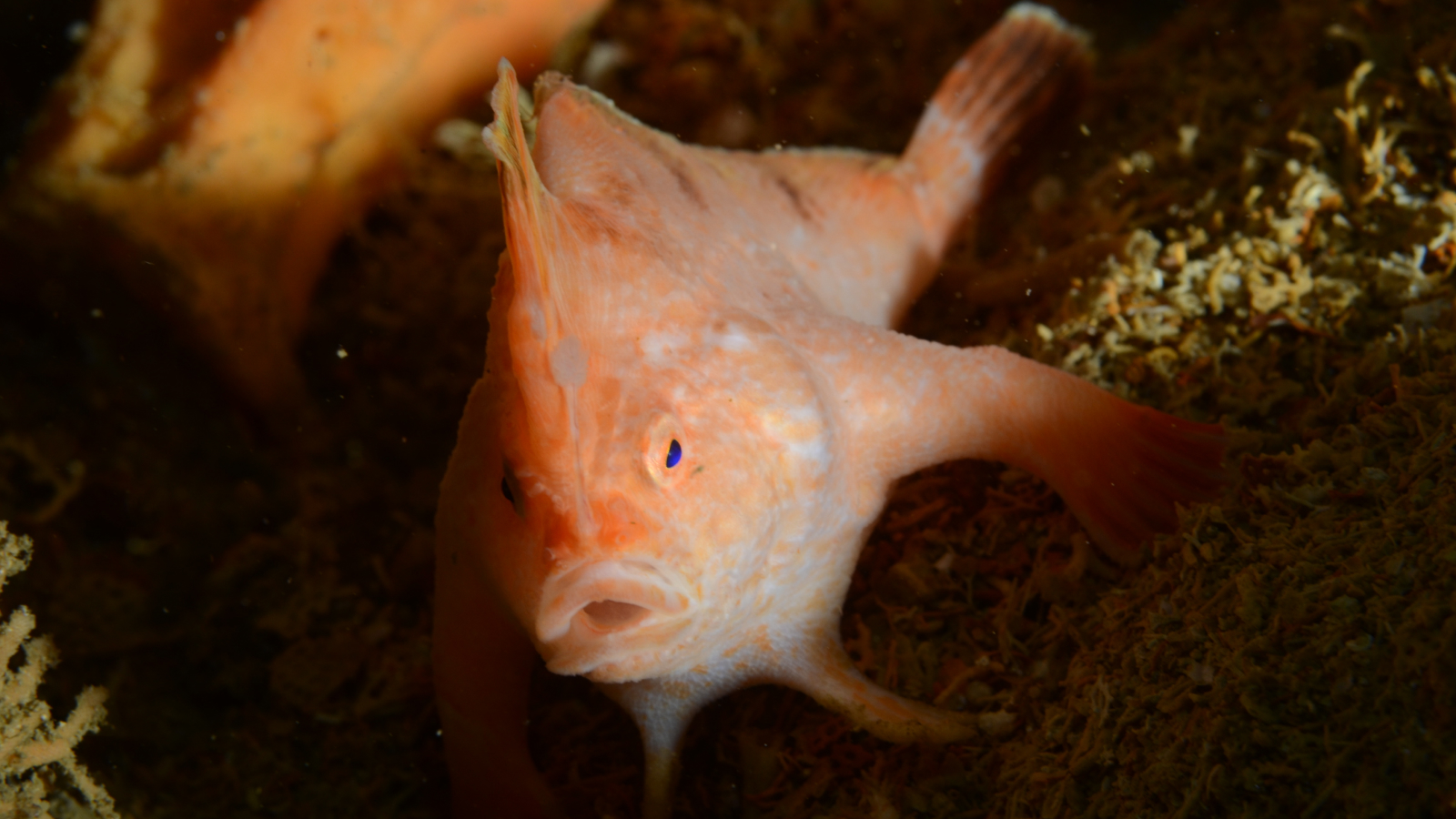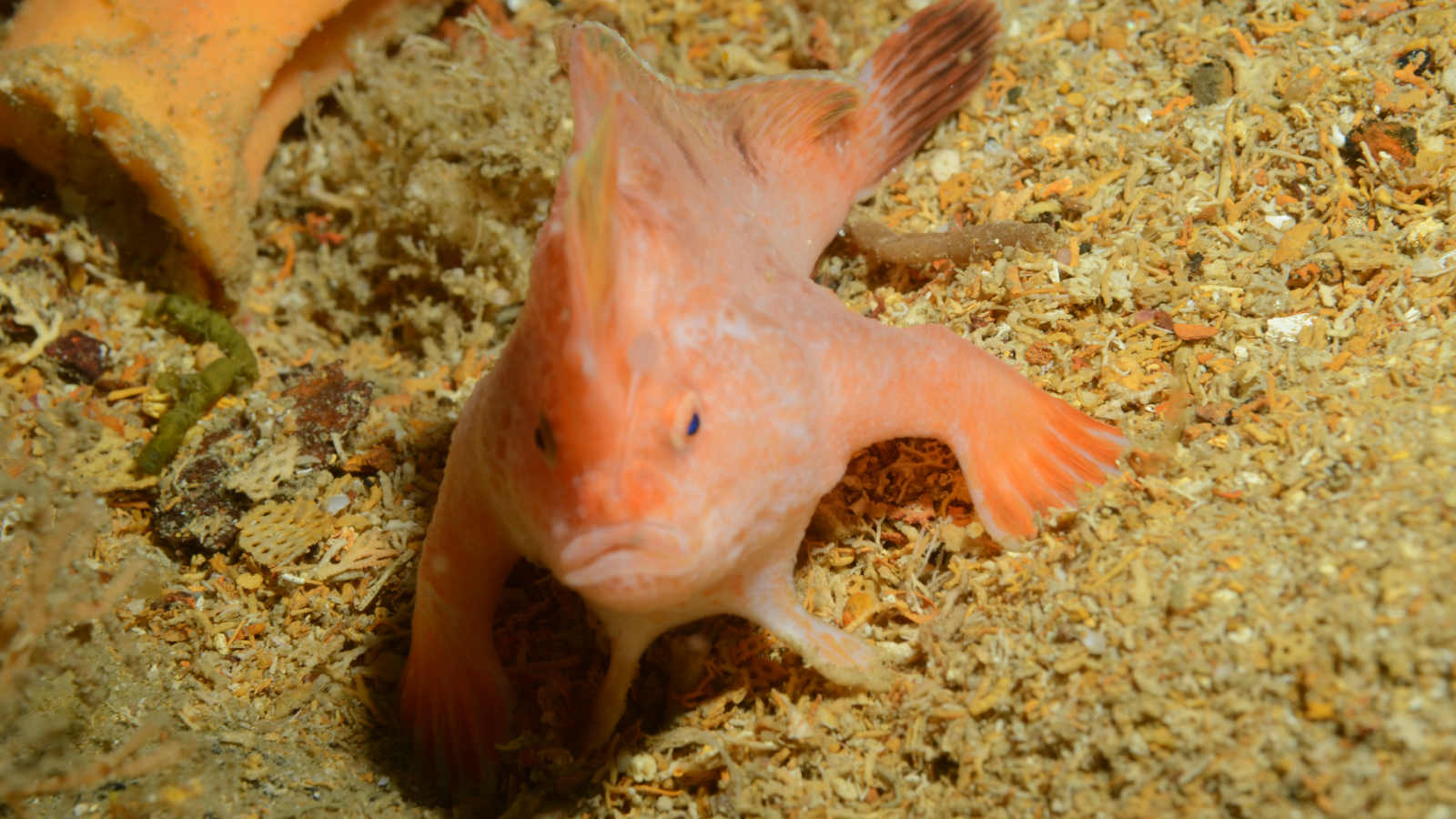Watch rare endangered pink handfish walking in 19th-century shipwreck off Tasmania
Technical scuba divers found a rare pink handfish hidden among the wreckage of the SS Tasman.
Scuba divers exploring a shipwreck off the coast of Tasmania got a huge surprise when they spotted an extremely rare pink handfish, and managed to capture the elusive creature on video.
The handfish (Brachiopsilus dianthus) was hidden among the coral-covered debris, with its hand-like pectoral fins extended. There have been only a handful of encounters with the pink handfish since the species was discovered in 1947.
Divers noticed the fish during an exploratory dive to the Dutch steamship, SS Tasman. "We were there to explore the wreck, but the handfish stole the show," Brad Turner, a member of the dive team who found the fish, said in a statement emailed to Live Science.
The remains of the SS Tasman — a steamship built in 1873 and used to transport cargo and passengers — are located near the granite island of Hippolyte Rocks 6.2 miles (10 kilometers) from the mainland of Tasmania. During an attempt to go through a narrow passageway, the ship sank when it struck an uncharted reef. The 29 passengers and crew members escaped, but left 75 cows aboard.
This dive was part of a series of explorations planned to commemorate the 140th year anniversary of the sunken ship.
At 230 feet (70 meters) below the surface, divers had 25 minutes to explore, staying mindful of their oxygen levels for a 90 minute ascent back to the surface. As the dive came to an end they had another shock when they spotted a second pink handfish, just 32 feet (10 m) from the first, Turner in the statement.



B. dianthus is one of four endangered handfish species found in Tasmania. Unlike other fish, handfish do not have swim bladders to control their buoyancy underwater, so they stay close to the rocky seabeds and can only swim short distances.
Get the world’s most fascinating discoveries delivered straight to your inbox.
"A key adaptation to their environment is their camouflage (they look like sponges on the seabed)," Neville Barrett, associate professor of ecology and biodiversity at the University of Tasmania, told Live Science in an email.
They use this camouflage to avoid detection by prey and predators, and use their unusually shaped fins to help them hunt. "Their pectoral fins have evolved into hand-like structures that let them sit on the seabed and quickly pounce on passing prey," Barrett said.
Scientists previously believed pink handfish lived in shallow waters to a maximum depth of 125 feet (38 m).
In 2021, the Institute of Marine and Antarctic Studies and the University of Tasmania used baited remote underwater video and autonomous underwater vehicles to record its occurrence at a depth of around 394 feet (120 m) for the first time. This was also the first time the pink handfish had been seen in the 20 years since its discovery.
"The sighting is part of several recent discoveries in the past two years that have shown us that this species can live a lot deeper than previously thought," Barrett said. Researchers suggest that pink handfish have been gradually moving from warming shallow waters to the refuge of cooler, deeper waters, raising concerns about whether the species will survive.
"This habitat will be seriously threatened by global warming and the species could easily be extinct in the next 100 years," Barrett warned.

Elise studied marine biology at the University of Portsmouth in the U.K. She has worked as a freelance journalist focusing on the aquatic realm.



